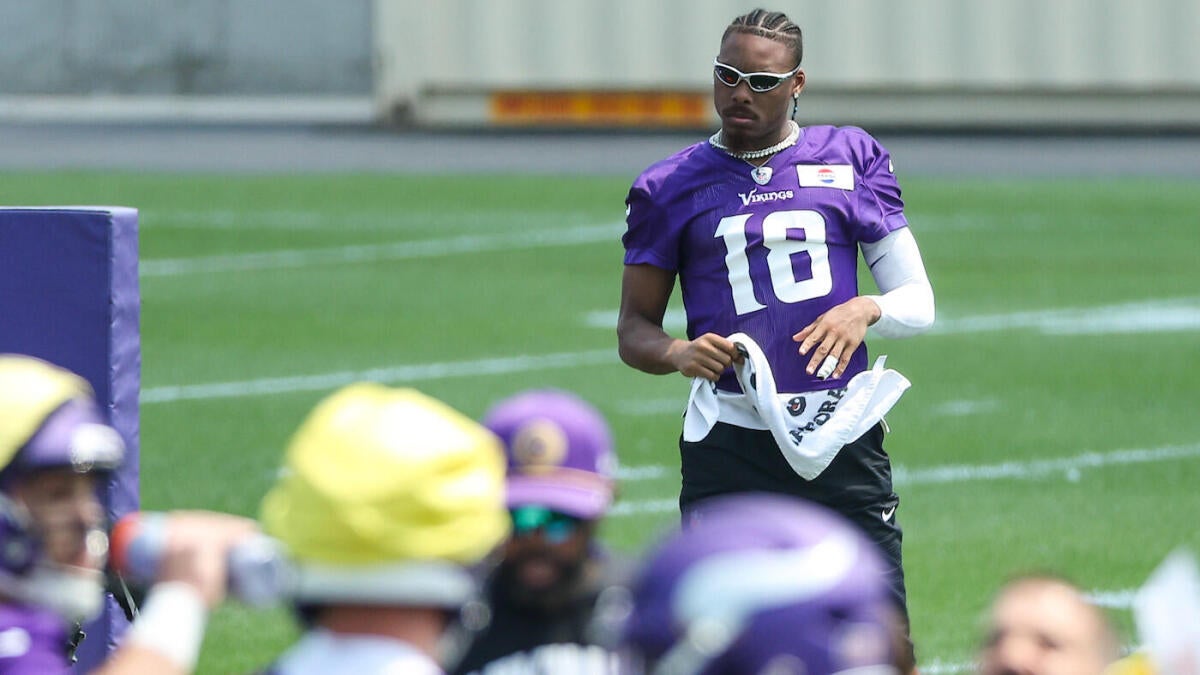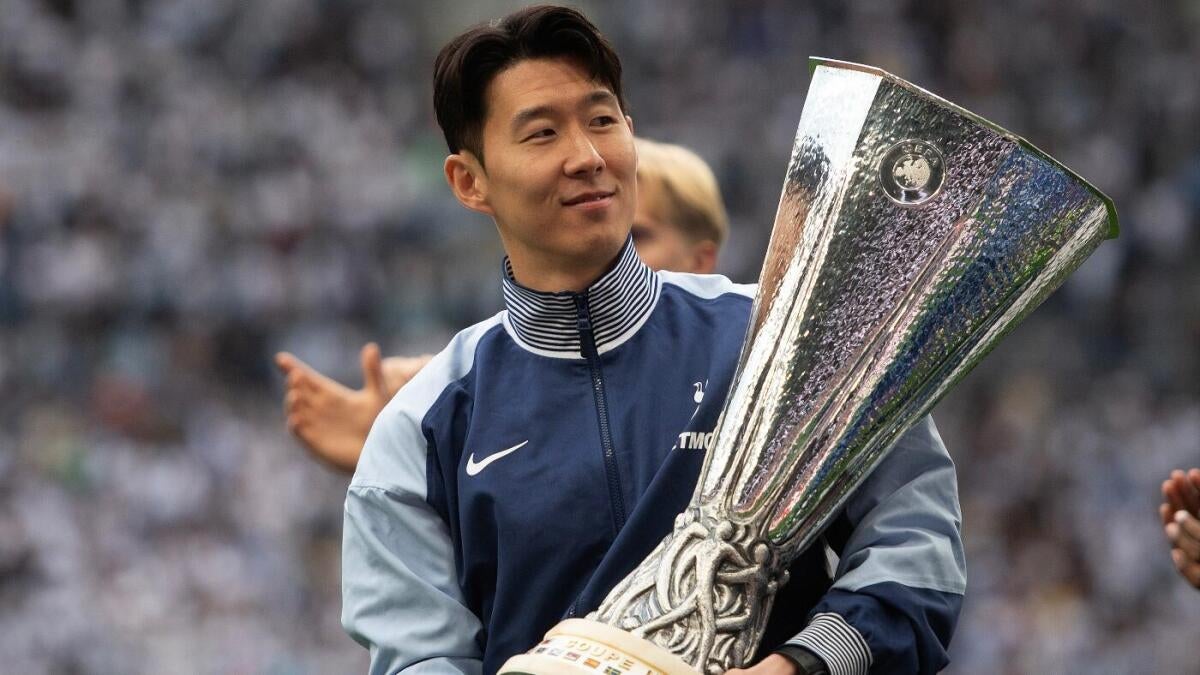The Fragile Fortress: How Training Camp Injuries Threaten NFL Teams’ Season Aspirations
The NFL’s annual training camp is a paradoxical crucible. It’s a place where potential is forged through grueling repetition, yet also where careers can be derailed by a single misstep. As the 2025 season approaches, several franchises find themselves staring at potential season-defining injuries to key players. The Los Angeles Rams, Houston Texans, and Minnesota Vikings are among the teams facing this precarious situation, with Matthew Stafford, Joe Mixon, and Justin Jefferson respectively dealing with injuries that could reshape their teams’ trajectories.
The Quarterback Conundrum: Matthew Stafford’s Back Issues
The Los Angeles Rams’ Super Bowl LVI victory seems increasingly like a mirage as the team grapples with the uncertain status of their veteran quarterback. Matthew Stafford, entering his 17th NFL season at 37 years old, is battling back soreness that has kept him sidelined for a significant portion of training camp. Initially expected to miss only the first five days, Stafford’s absence stretched into another full week, raising serious concerns about his availability for the regular season.
The Rams’ public stance of optimism contrasts sharply with the reality of Stafford’s situation. Back injuries for quarterbacks, particularly those with Stafford’s extensive mileage, are particularly concerning. These injuries can compromise mobility, throwing mechanics, and overall effectiveness – all critical components of Stafford’s game. His history of playing through pain, while admirable, also suggests a potential for long-term damage if not properly addressed.
The potential ramifications extend far beyond Stafford’s individual performance. The Rams’ offense is intricately designed around Stafford’s ability to make quick reads and deliver accurate throws. His absence or diminished effectiveness would force the team to rely more heavily on their running game, which could become predictable and easier for defenses to contain. The backup quarterback would face an immense challenge in stepping into such a complex system and building rapport with the receiving corps.
The Running Back Dilemma: Joe Mixon’s Foot Injury
The Houston Texans made a significant offseason investment in Joe Mixon, acquiring him to be a cornerstone of their revamped offense. However, a lingering foot injury has derailed these plans, placing Mixon on the non-football injury list and sidelining him for multiple weeks of training camp.
Foot injuries for running backs are particularly problematic as they directly impact acceleration, change of direction, and contact absorption – all essential elements of an effective running game. While the specific nature of Mixon’s injury remains undisclosed, any setback that keeps him off the field during this crucial preparation period is alarming.
Mixon was brought in to provide consistency and reliability in the backfield, contributing not only in the running game but also as a pass-catcher and in pass protection. His absence forces the Texans to rely on less proven options, potentially making their offensive attack more predictable. This could be particularly challenging for rookie quarterback C.J. Stroud, who would benefit greatly from a stable and productive running game to complement his passing attack.
The Wide Receiver Worry: Justin Jefferson’s “Dinged Up” Status
Justin Jefferson, the Minnesota Vikings’ superstar wide receiver, is arguably the most dynamic player at his position in the NFL. Any potential injury to Jefferson sends shockwaves through the Vikings organization and their fanbase. Early reports indicate that Jefferson is “dinged up,” raising concerns about his availability for Week 1.
While details about Jefferson’s injury are scarce, the mere mention of any issue with a player of his caliber is concerning. Wide receivers rely heavily on their speed, agility, and explosiveness to create separation and make plays. Even a minor injury can significantly impact these abilities and limit their effectiveness on the field.
Jefferson is the focal point of the Vikings’ passing attack, capable of stretching the field, making contested catches, and generating yards after the catch. His absence would force defenses to focus their attention on other receivers and potentially double-team quarterback Kirk Cousins, making it much more difficult for the Vikings to move the ball downfield. The Vikings’ offense would become significantly less explosive and predictable without Jefferson’s presence.
The Ripple Effect: How Injuries Impact Team Dynamics
Injuries to key players create a ripple effect that extends far beyond the individual. They impact team morale, alter game plans, and force coaching staffs to make difficult decisions. The loss of a star player can demoralize a team, creating a sense of vulnerability and uncertainty that affects overall confidence.
Coaching staffs must scramble to adjust game plans when key players are sidelined. This may involve simplifying the offense, relying more heavily on the run game, or implementing creative schemes to compensate for the missing player. These adjustments can be particularly challenging for young or inexperienced coaching staffs.
However, injuries also create opportunities for other players to step up and prove their worth. Backup quarterbacks, wide receivers, and running backs may get a chance to showcase their talent and earn a larger role on the team. This can be a valuable development opportunity, but it also comes with significant risk if the replacement players are not ready to perform at a high level.
Navigating the Injury Landscape: A Team Effort
Managing injuries is a constant challenge in the high-stakes world of the NFL. Teams employ a variety of strategies to mitigate the risk of injuries and ensure that their players are healthy and ready to perform. Rigorous strength and conditioning programs are designed to improve players’ physical fitness, build muscle strength, and enhance their overall durability.
Teams also employ a comprehensive team of sports medicine professionals, including doctors, athletic trainers, and physical therapists, to provide top-notch medical care to their players. These professionals work closely with coaching staffs to monitor players’ health, prevent injuries, and facilitate recovery when injuries do occur.
Adequate rest and recovery are essential for preventing injuries and allowing players’ bodies to heal. Teams incorporate rest days, massage therapy, and other recovery modalities into their training schedules to ensure that players are not overworked or overtrained. This holistic approach to player health and wellness is crucial for maintaining a competitive edge in the NFL.
Conclusion: The Resilience Factor
As training camp progresses and the regular season draws near, the health of key players will continue to be a major storyline. The ability of teams to navigate the injury landscape, adapt to unforeseen circumstances, and maintain a positive attitude will be crucial for success. The teams that can effectively manage injuries and foster a culture of resilience will be the ones that ultimately contend for a Super Bowl title.
The early injury concerns surrounding Stafford, Mixon, and Jefferson serve as a stark reminder of the fragility of even the most meticulously planned NFL seasons. The true test will be how these players recover and how their teams adapt in the face of adversity. In the NFL, where the margin for error is razor-thin, the ability to overcome setbacks may very well be the difference between a successful season and a disappointing one. The teams that can weather these early storms and emerge stronger will be the ones to watch as the 2025 season unfolds.











